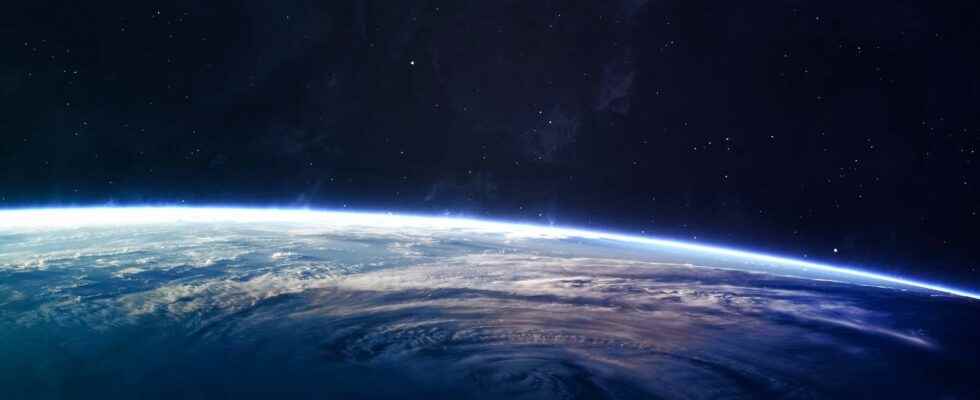The oceanic crust is one of the two components of the earth’s crust. Very different from continental crust, it is continuously formed at mid-ocean ridges. However, its composition is very variable.
You will also be interested
With the continental crust, the oceanic crust represents the other major component of the earth’s crust. While the first characterizes the base of the continents, the second lines the bottom of the oceans. Despite the fact that they both represent the outermost part of the lithosphere terrestrial, these two types of crust are however very different, both from the point of view of their composition and their formation.
The ridges, nurseries of the oceanic crust
While the growth of continental crust is currently relatively low, the majority of the continental masses having been formed very early in the history of Earth, the oceanic crust undergoes a continuous cycle of formation-recycling. While the oldest continental rocks that can be found are more than 4 billion years old, the oldest oceanic crust today is no more than 200 million years old. A major difference which underlines the difference in processes to which the two components of the earth’s crust are subjected.
Oceanic crust is produced at mid-ocean ridges, long chains of underwater volcanoes which, like immense sutures, run through the middle of all the oceans of the globe. The ridges represent limits of tectonic plates divergent, which can be considered as the nursery of the oceanic crust.
At the level of the ridges, the lithosphere is extremely thin, allowing the rise of the asthenosphere, which designates the normally deep and warm part of the coat. This relatively rapid asthenospheric ascent (a few centimeters per year) is accompanied by significant decompression, without loss of heat (we are talking about decompression adiabatic). These pressure-temperature conditions make it possible to initiate the merger from peridotites, the mantle rocks. However, the entire asthenospheric mantle does not melt: only a fraction of 10 to 20% becomes liquid. It is the process of partial fusion.
An oceanic crust composed of igneous rocks
Starting from magma, several types of rocks will form. Part of the magma will crystallize in depth to form a level of gabbros. This level of gabbros, whose base is about 6-7 kilometers deep, thus overcomes the peridotites of the mantle which have undergone partial melting. Therefore, we speak of a “depressed” mantle, in the sense that it lacks certain elements compared to the primitive asthenospheric mantle. This “new” depressed mantle from the asthenosphere will come to integrate the new oceanic lithosphere.
From the crystallizing gabbros, magmatic liquid will escape, which will continue to rise in the form of let’s go (or from dikes). These veins will carry magma to the interface with seawater, where the wash emitted will immediately crystallize to form basalts. Contact with water in fact causes very rapid cooling, which will produce basalts with a rounded shape. We are talking about pillow basalts.
The crystallization of magma at different depths will thus lead to the formation of a new oceanic crust, which is defined by a level of gabbros, surmounted by a vein complex, itself surmounted by a level of pillow basalt. All of this new crust is usually 6 to 7 kilometers thick. But this is far from being a generality.
An oceanic crust composed of mantle rocks
The thickness of oceanic crust can vary significantly, as can its composition. If this scheme of composition and architecture has long been defined as “classic”, because it was one of the first to be documented, we now know that it is in fact only a an extreme case, which is observed when the supply of magma at the level of the ridge is significant, which is far from being the case on all ridges. This type of oceanic crust is therefore currently referred to as “magmatic”, or rich in magma. This type of oceanic crust is produced at the level of the east-Pacific ridge, for example. It is generally accepted that it is associated with a speed rapid ocean expansion. In detail, however, things are more complicated, because the plate separation speed is not the only parameter to come into play in the production of magma.
Conversely, the other extreme case is referred to as “weakly magmatic oceanic crust”. This type of crust is generally found at the level so-called slow or ultra-slow ridges, for example the Southwest Indian Ridge. In this case, the partial melting of the mantle does not produce enough magma to generate a magmatic crust like the one defined above. The crust is then composed only of a level of serpentinized peridotites (mantle rocks altered by seawater) surmounting fresh peridotites. The serpentinized peridotite level is generally only 3 kilometers thick. It is not produced by magmatic, but tectonic processes. One can nevertheless frequently find gabbros mixed with peridotites, as well as basalts on the surface. The quantities of these two igneous rocks are however very variable and it is this whole range of variability which occupies the space between the two extreme cases.
A crust that ages away from the axis
In any case, the new crust formed will be pushed away from the axis of the ridge by the continuous emplacement of new crust. As it moves away from the axis, the oceanic crust will take on an increasingly thick sedimentary cover.
Our knowledge of the composition of the oceanic crust comes mainly from the study of ophiolites and drillings carried out at sea. However, no drilling has yet succeeded to drill through an oceanic crust in its entirety.
Interested in what you just read?
